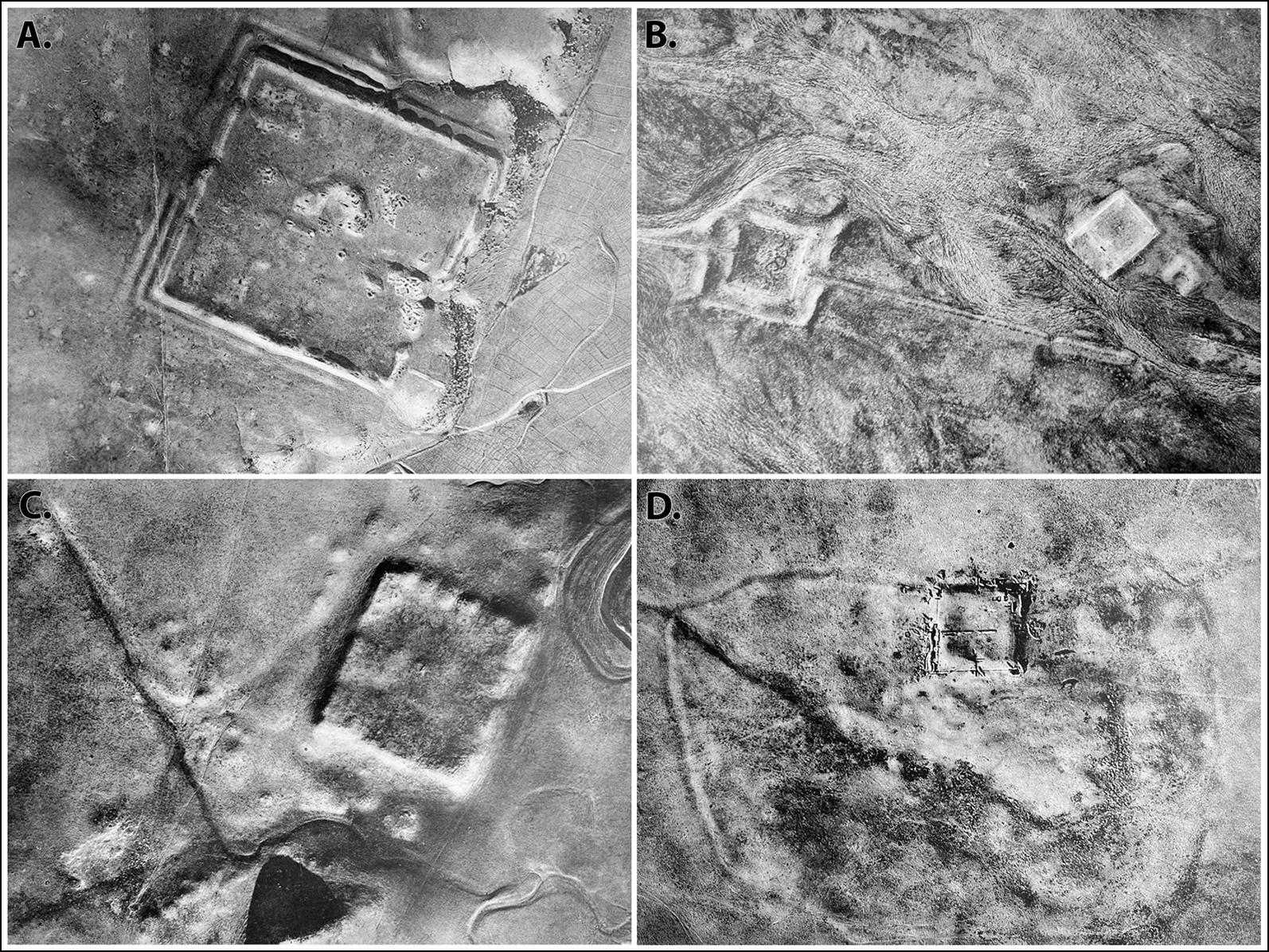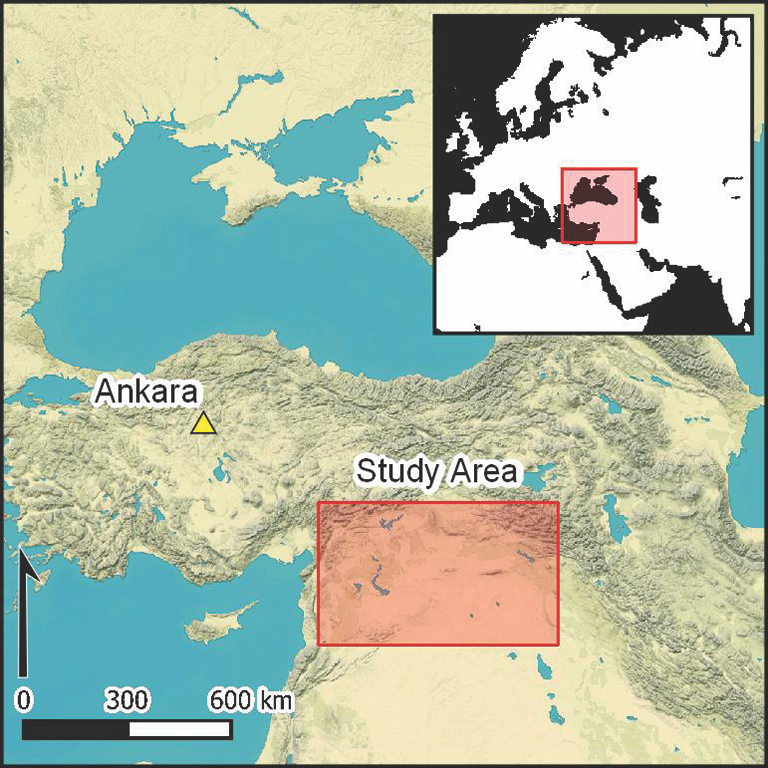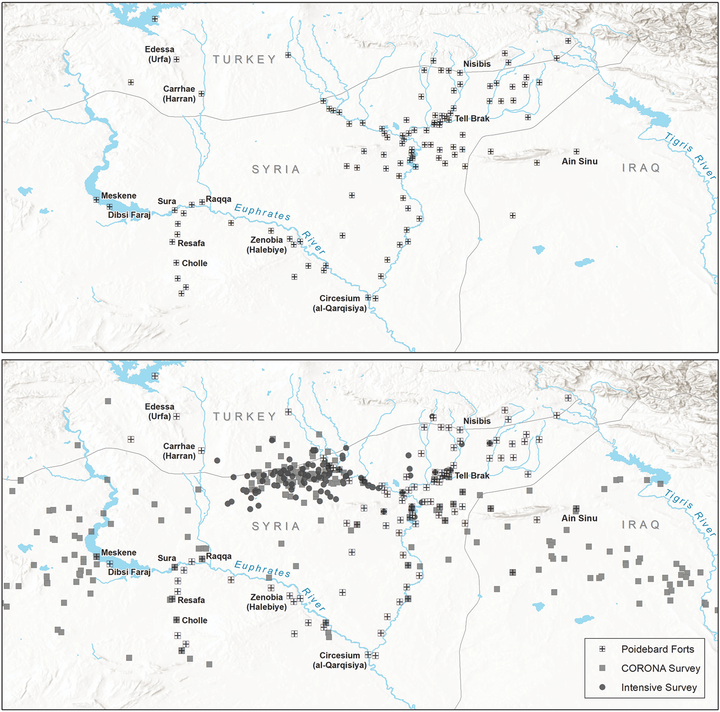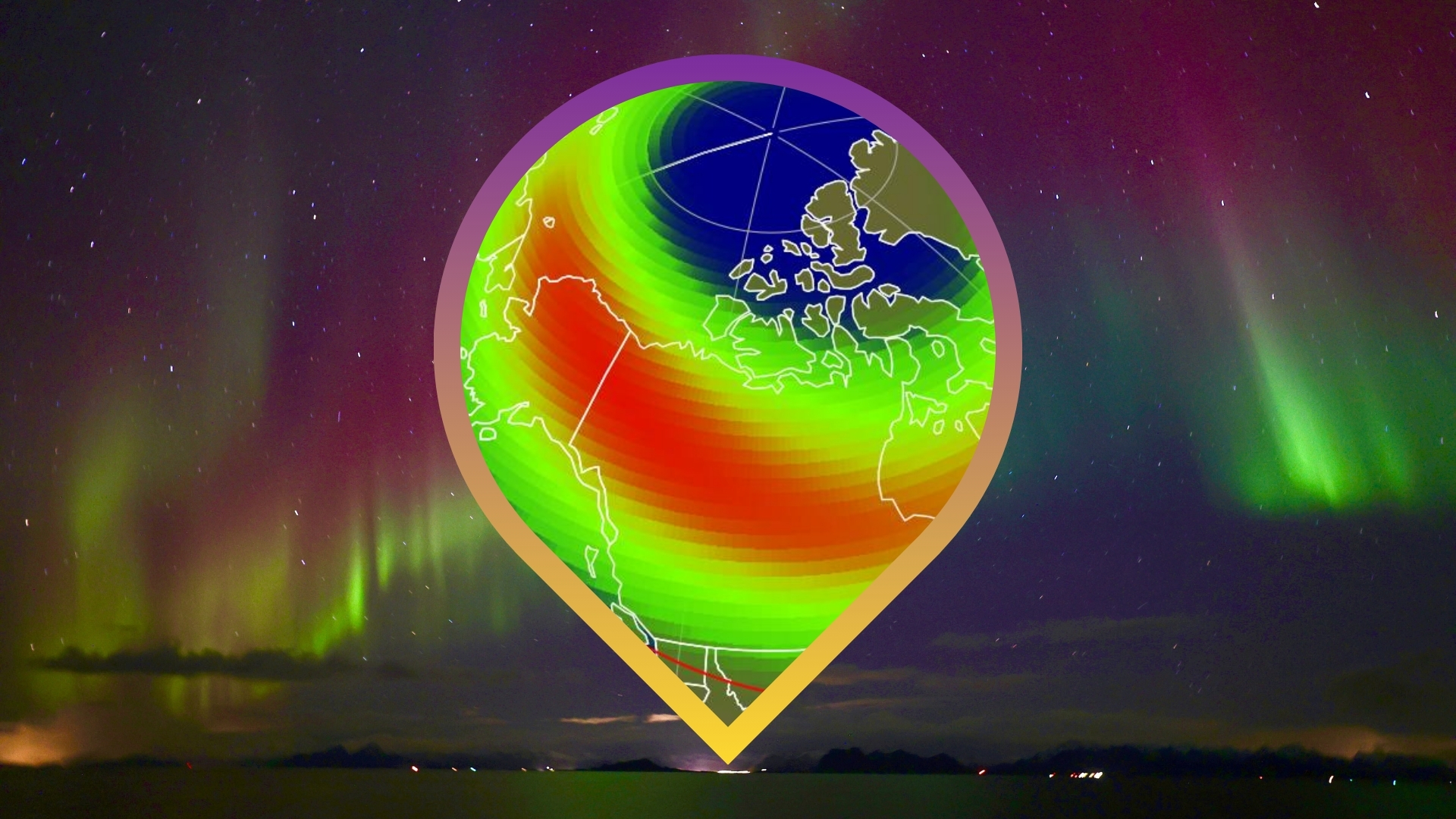Declassified spy satellite images reveal 400 Roman Empire forts in the Middle East
'Intensive fort construction' took place at the borders of Rome's reach.
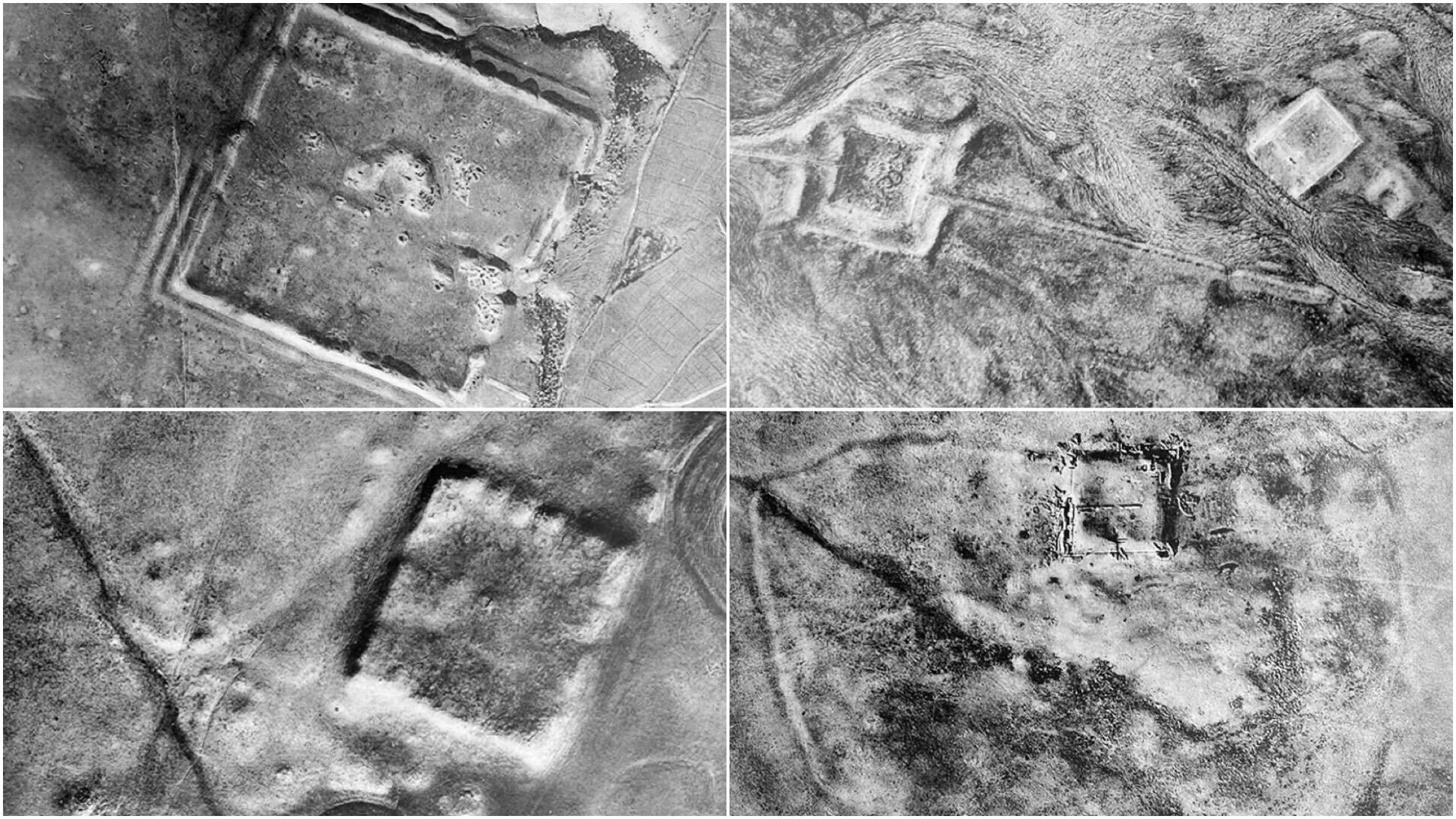
Hundreds of Roman Empire forts popped up in old spy satellite imagery depicting regions of Syria, Iraq and nearby "fertile crescent" territories of the eastern Mediterranean.
These satellites were once used for reconnaissance in the 1960s and 1970s, but their data is now declassified. Some of their archived images are now allowing for fresh archaeology finds in Earth zones often difficult for researchers to visit.
The newly found 396 forts, spotted straight from space, confirm and extend an aerial survey of the region performed in 1934; this survey had recorded 116 forts on the Roman Empire's eastern frontier. Archaeologists continue to agree with the basic conclusion of that nearly century-old study, which is that Rome was fortifying its frontier — and the new study brings fresh perspective.
Related: Space archaeology is a thing. And it involves lasers and spy satellites
"These forts are similar in form to many Roman forts from elsewhere in Europe and North Africa. There are many more forts in our study than elsewhere, but this may be because they are better preserved and easier to recognize," lead author Jesse Casana, a professor of anthropology focusing on the Middle East at New Hampshire's Dartmouth College, told Space.com in an email interview. "However, it could also have been a real product of intensive fort construction, especially during the second and third centuries AD."
The origins of Roman Empire forts
Most historians say the Roman Empire began around 27 BCE. The older Republic had been in the throes of a lengthy civil war after a group of senators assassinated the dictator Julius Caesar in 44 BCE, alleging Caesar had grown too powerful.
Eventually, the Senate backed one of the rivals for Rome's leadership — Octavian, Caesar's heir — and gave the young man temporary dictatorship powers, as well as military backing. Very simply put, this resulted in Octavian overcoming his rivals. In 27 BCE, he received one-man leadership powers permanently from the Senate. Now called Augustus ("the exalted one"), his stated aim was to "restore the Republic" while consolidating his powers for himself and his successors.
Breaking space news, the latest updates on rocket launches, skywatching events and more!
The line of "imperators" (emperors) continued after Augustus for centuries. But during the period when the study's newly found Roman forts were constructed – roughly spanning the second and sixth centuries CE, though other times are likely included – various difficulties were arising. Particularly in the third and fourth centuries, for example, there was no established line of emperor succession, leading to repeated assassinations and coups.
The huge Roman Empire, stretching at its largest from Britain to Egypt, was also struggling to maintain its borders, in part due to sheer size and in part due to incursions from nomadic groups grappling with climate change. Following a few reorganizations, the Roman Empire was officially divided between two heirs in 395 CE, after the death of Emperor Theodosius I. The western side was gradually taken over by other peoples, while the eastern side persisted in what we now call the Byzantine Empire down to roughly the 1400s CE.
That brings in how the newly found forts' functioned at the empire's edge.
In a 1934 study based on flights performed in the 1920s, pioneering French archaeologist Antoine Poidebard found 116 forts in an aerial survey, the study authors stated. He suggested the fortifications were supposed to be a defensive line against Persians (more properly, the Parthians and the Sasanians, who were other superpowers of the era). But a limitation of his work is that he mainly flew his plane where he believed forts would be found. The forts, to be fair, were surveyed before the existence of modern-day archaeological standards.
Casana and fellow researchers' new satellite image study was, on the other hand, able to cover more ground and counteracted Poidebard study's bias. It showed the freshly discovered 396 forts had no discernible defensive north-south pattern against eastern peoples, and were instead scattered.
Related: A comet explosion may have started agriculture in Syria 12,800 years ago
The new results may confirm the suspicions of some earlier scholars, who argued the 116 Poidebard forts were too far apart to form a connective line of defenses. Instead, the encampments in modern-day Syria and Iraq were possibly used to protect caravans bringing valuable goods to and from Rome's provinces, while allowing for communications and intercultural exchanges.
The story of the satellites
The study images came via two satellite programs originally used for surveillance during the Cold War between the United States and the Soviet Union (and their respective allies). The nations pursued military technologies (including early space missions) on "political, economic, and propaganda fronts" with minimal use of weapons, according to Encyclopedia Britannica.
During this time, the "Space Race" was also in full-force, seeing both space powers rapidly accrue milestones with human and robotic space missions, such as launching the first people and sending spacecraft around the solar system. (The rivalry sometimes coalesced into moments of collaboration, however, such as the Apollo-Soyuz Test Project space mission that launched astronauts and cosmonauts together in 1975.)
One of the aims of the Cold War was rapid military reconnaissance using satellites that could promptly return photographic images to Earth. The Central Intelligence Agency's Corona program, with assistance from the U.S. Air Force, imaged areas in nations such as China and the Soviet Union between 1959 and 1972. A successor program called Hexagon (also called Big Bird, KH-9 or KeyHole-9) continued surveying Soviet military zones between 1971 and 1986, led by the National Reconnaissance Office.
But most importantly for the new study, these satellites were specifically built to take clear and precise images.
"Because these images preserve a high-resolution, stereo perspective on a landscape that has been severely impacted by modern-day land-use changes, including urban expansion, agricultural intensification and reservoir construction, they constitute a unique resource for archaeological research," the study authors stated in their work, published Thursday (Oct. 25) in Antiquity.
And it was actually the images' declassification that offers such rich data harvesting grounds for archaeologists, Casana told Space.com, as the pictures are easy to source and relatively inexpensive.
"All the satellite images we used in this study are publicly available through the U.S. Geological Survey, who serve them on their EarthExplorer data distribution portal," he explained. "Images that are already scanned can be downloaded there for free, while unscanned images can be purchased for $30 USD."
After downloading the images, however, came hours of processing to georeference and spatially correct the images. These processes are needed to accurately map features on the Earth's surface using GPS technology, which itself was originally used for the military as well. Archaeologists have reshared most of their work with the community via the Corona Atlas Project led by the University of Arkansas' Center for Advanced Spatial Technologies. The site even includes "a basic archaeological site database for the Middle East to help locate sites of interest," Casana said.
Related: Declassified US spy satellites reveal rare look at secret Cold War space program
Aside from continuing the work of Poidebard, who was cited as influential to "a long history of scholarship" in the new study, the declassified Corona and Hexagon imagery provide other benefits to archaeologists. Ancient sites are subject to many threats, Casana pointed out. The public and media focus on the damage caused by looting and the military, but archaeologists find that "destruction of sites by urban development, agricultural intensification, and dam construction are far more widespread and severe," he said. (Climate change has a role to play in these problems, too, as communities seek to protect food and water resources against a warming planet.)
"The real value in historical, high-resolution imagery like Corona and Hexagon is in preserving a picture of a landscape that by and large no longer exists," Casana said, noting the spy imagery is roughly half a century old and there has been a lot of change in Iraq and Syria since then. "Our study also helps show that an unknown number of other sites were also likely lost in the time between Poidebard's flights in the 1920s and the Corona imagery of the late 1960s," he added.
More broadly, the study may also add nuance to how the Romans managed their empire frontiers. Ancient Romans were famously militaristic and well-known for incursions reaching areas as far as Britain; they sometimes even fought with or allied with local tribes depending on the local commander's (or emperor's) purpose. At the same time, however, the Romans depended on trade and valued it. The researchers say their new fort study may help provide more fodder for the Roman empire's interregional links.
But the new study might be subject to preservation bias, the authors warn. The density of forts seen in some areas – as well as the distribution of those forts that remain visible after all the eons – may reflect the reality that many others were lost due to "settlement and land-use practices," the authors stated. And the ground continues to change rapidly; many forts Poidebard spotted were no longer visible just a generation later, in the spy satellite images.
That said, the archaeologists have found an additional 106 "fort-like features" in a subregion of the satellite study, in which future discoveries may lurk. "We are planning to expand the survey to prospect for more sites, including forts and others," Casana said. "We will work within our current survey area using additional forms of imagery, such as the more recently declassified Hexagon and U2 spy plane imagery, as well as expanding regionally into other parts of the Middle East."

Elizabeth Howell (she/her), Ph.D., was a staff writer in the spaceflight channel between 2022 and 2024 specializing in Canadian space news. She was contributing writer for Space.com for 10 years from 2012 to 2024. Elizabeth's reporting includes multiple exclusives with the White House, leading world coverage about a lost-and-found space tomato on the International Space Station, witnessing five human spaceflight launches on two continents, flying parabolic, working inside a spacesuit, and participating in a simulated Mars mission. Her latest book, "Why Am I Taller?" (ECW Press, 2022) is co-written with astronaut Dave Williams.
